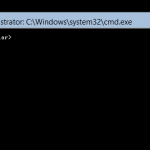
Windows comes with ICMP (ping) communications blocked by the system firewall, by default. You may want to enable ping on your Windows VPS or dedicated server for some practical purposes, for example to monitor uptime with an outside ping-monitoring service. How to Enable Ping (ICMP) on Windows Simply open Command Prompt as Administrator (right click > Run […]





![Permalink to Access the Windows Store on Server 2012 R2 [How To]](https://www.solvps.com/blog/wp-content/uploads/2015/10/windows-store-logo1-150x150.png)
![Permalink to Synchronize Time with NTP on Windows Server or VPS [How to]](https://www.solvps.com/blog/wp-content/uploads/2015/07/windows10-vps-screenshot-1-150x150.jpg)

![Permalink to Removing Roles/Features from Windows Server 2012 R2 [How To]](https://www.solvps.com/blog/wp-content/uploads/2015/10/Screen-Shot-2015-10-02-at-11.54.57-AM-150x150.png)



